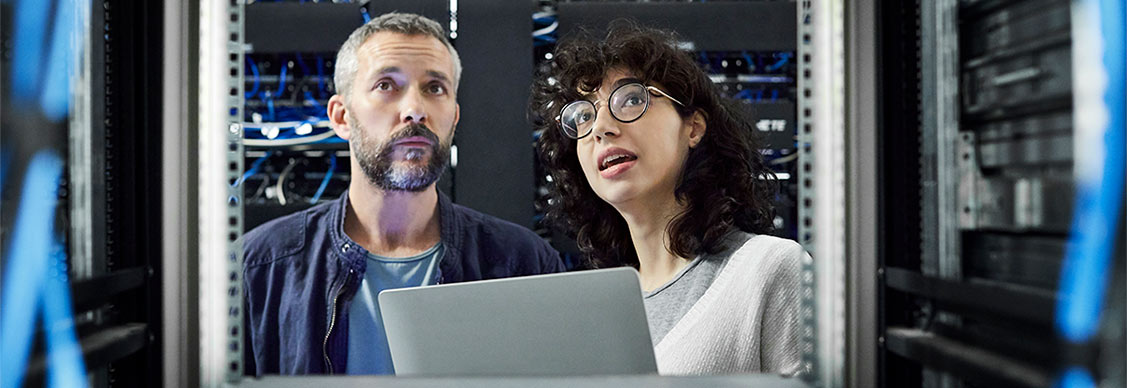How older data centers are keeping pace
Retrofitting strategies are helping maximize value in aging data centers
In the last three years, the rapid adoption of artificial intelligence has caused a dramatic shift in the data center landscape.
The global data center market is set to expand at a 15% compound annual growth rate, with potential to grow at a 20% rate by 2027, according to JLL’s Global Data Center Outlook.
Yet challenges in sourcing land and power for new sites can mean it takes years for new data centers to be built. Semiconductors and high-powered chips are consuming more power and generating more heat, affecting rack densities, data center design and cooling requirements.
“Keeping existing facilities competitive and efficient is becoming an increasingly vital part of maintaining the current pace of growth,” says Colm Shorten, Senior Director of JLL Data Center Strategy & Innovation.
Sustainability is driving data center retrofits
The growth of AI has created a different set of demands for data centers, which until recently, were largely built to support cloud-based technology operations.
AI and cloud data centers have differing purposes, design and cooling specifications. The rise of the former does not naturally lead to the obsolescence of the latter – but there is a growing need to future proof legacy data centers.
We’re creating ever increasing amounts of data – the IDC is forecasting 192 trillion gigabytes to be generated globally in 2025 alone - meaning the need for cloud services is going nowhere.
Looking for more insights? Never miss an update.
The latest news, insights and opportunities from global commercial real estate markets straight to your inbox.
Yet as Shorten explains, since the concept of cloud emerged, data-center design fundamentally hadn't changed much for 20 or more years. Now, thanks to evolutions in GPU and chip technology, combined with the advent of tougher sustainability regulations and energy efficiency goals, traditional infrastructure is under pressure to change.
Take Germany, where new data centers starting operations on or after July 1, 2026, must achieve a Power Usage Effectiveness (PUE) of 1.2 or less, while legacy data centers must reach 1.5 by July 2027 and 1.3 by July 2030.
“You don't have to make significant changes to the physical building envelope, but you do have to continuously optimize to drive efficiency, stay fit for customer purpose and meet environmental standards,” Shorten says.
This can involve incremental changes such as combining air cooling and active rear door heat exchangers to provide hybrid solutions that meet PUE commitments.
Investment Opportunities
Combatting potential obsolescence factors
When Chris Strathon, JLL Head of EMEA Data Centres, Value & Risk Advisory, first started valuing data centers, anything over 5 megawatts (MW) was considered big.
“Now even 20 MW is considered small and the data centres we're valuing are often 50 MW to 100 MW” he says.
Aside from the amount of power required by modern data centres, the second risk factor is the age of the plant and machinery.
“It’s less about functional obsolescence and more about age depreciation – whether the equipment can support the greater power load that's being used by modern servers,” Strathon says.
Yet older data centers have several factors in their favor when it comes to looking at long term value propositions.
For one, they’re already connected to the grid, giving them an advantage over new developments that are chasing land and pockets of power in a constrained market.
Shorten points out that during development, operators quite often book between 60-100 MW of power from the grid but won’t initially use the full capacity, giving existing sites the potential bandwidth to scale up.
And thanks to improved equipment specifications, increased rack density is now possible without expanding physical footprint.
“What would have taken 400 racks for 3 MW or 4 MW of power would now only need 50 high density racks” Shorten says.
Another big plus is that cloud computing data centres are let on long-term leases to major hyperscalers, usually with options to renew, making them attractive to investors looking for secure income producing assets.
“We’re seeing increased liquidity, with banks willing to fund proven operators with good track records,” says Strathon.
One surprising trend he’s noted, is a number of operators refurbishing small edge data centers, to future proof capacity and meet enterprise client needs.
“These assets were expected to have reached the end of their shelf life, but they’re now being updated and remain a key part of the wider infrastructure ecosystem,” says Strathon.
Given the expansion of digital demand, coupled with the wider challenges of bringing new supply to market, Strathon says there’s lots of opportunity for traditional cloud data centers in strategically valuable locations.
“Retrofitting has become much more common and helped defy the obsolescence we thought we’d see, meaning with wise investments, older data centers could continue to serve a critical purpose for many years to come,” he says.
Contact Chris Strathon
Head of EMEA Data Centres, Value & Risk AdvisoryWhat’s your investment ambition?
Uncover opportunities and capital sources all over the world and discover how we can help you achieve your investment goals.
